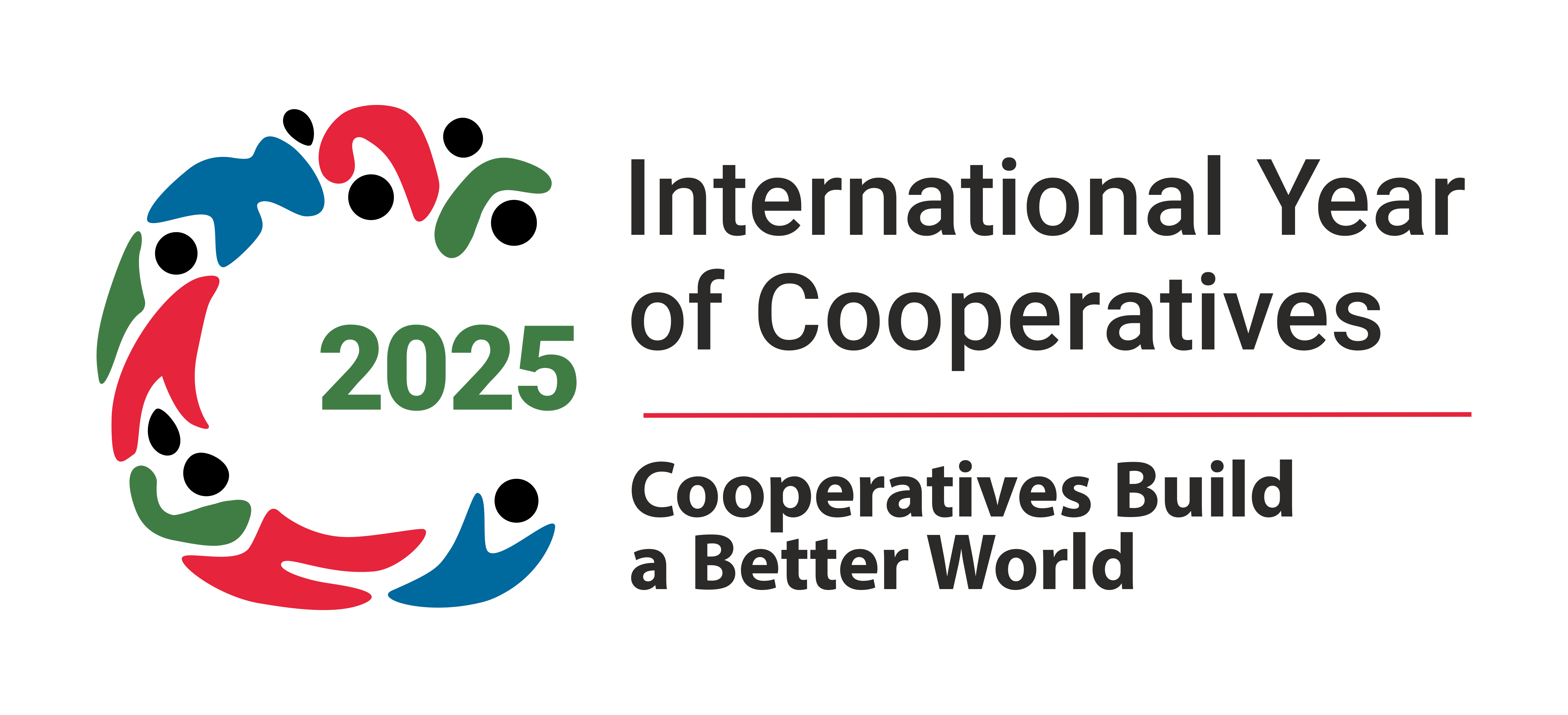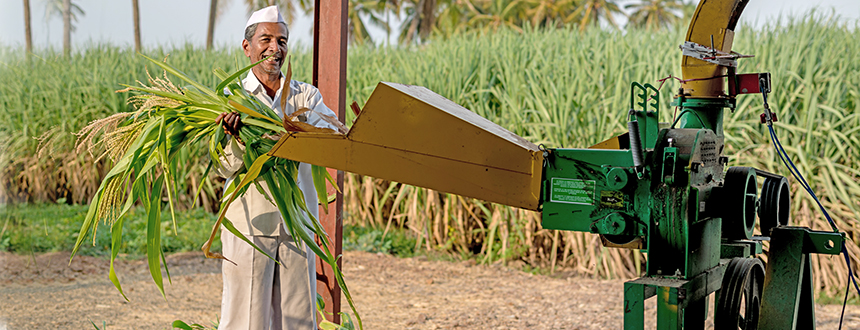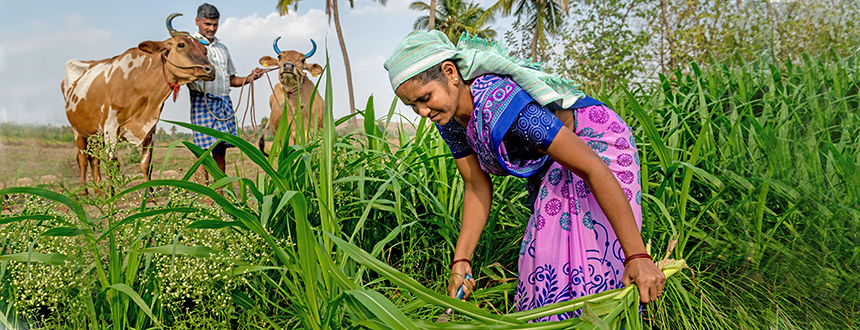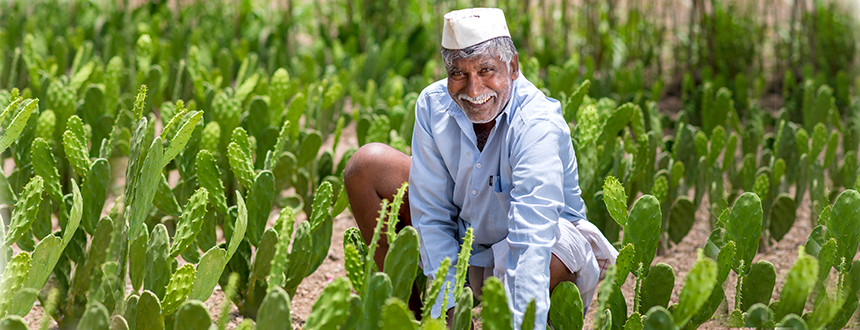Development and popularisation of‘'Green Fodder Production Technologies’
A. Coordination with ICAR-IGFRI, Jhansi & AICRP centres on forage production and utilisation
NDDB coordinates with IGFRI, Jhansi and forage breeding centres under AICRP on Forage Production & Utilisation for research and development pertaining to forage crop production technology and its extension to dairy farmers.
Being a member of the Central Variety Release Committee (CVRC), NDDB plays a key role in identification and release of new varieties of fodder crops.
NDDB also coordinates with ICAR institutes and State Agricultural Universities to develop ‘variety-specific’ seed production technologies for increasing seed yield and quality. These are then communicated to seed growers and seed production agencies under the dairy cooperative network.
B. Development of Agronomic techniques for Forage Crops with high relevance to dairy farmers
NDDB has taken the initiative for development of fodder cultivation technologies for important forage crops such as fodder beets, thorn-less cactus and moringa which have high relevance for improving productivity in small/marginal dairy farms.
Agronomic practices for these crops have been documented and published for creating awareness. Sample seed and planting material of these crops have also been provided to dairy cooperatives along with details of recommended agronomic practices.
NDDB also independently evaluates newly released fodder varieties for their fodder yield/forage quality for maximising benefits to dairy farmers.
C. MOU with ICAR-IIMR
Maize is one of the good crops for fodder cultivation due to high fodder yield potential up to 70 MT/ha in 100 days and excellent ensiling characters.
NDDB has executed a Memorandum of Understanding (MoU) with Indian Institute of Maize Research (ICAR-IIMR) to jointly develop leafy maize hybrids for fodder and silage purpose. Leafy maize hybrids have desirable characters like high leaf to stem ratio, digestible starch, brix content and fodder yield in comparison to grain hybrids of maize that are presently being used by farmers for silage production. NDDB is also multiplying parental lines of ICAR-IIMR developed maize hybrid DMRH-1410 for silage production purpose.
D. Fodder Development in drought prone areas of Vidarbha
Farmers in Vidarbha continue to face chronic shortages of green fodder due to poor irrigation facilities and rainfall. NDDB took up a pilot project to educate farmers in modern fodder production and conservation technologies in forty villages of Vidarbha region of Maharashtra. As part of this pilot project the following activities were undertaken:
- Farmers’ training programme on fodder development activities.
- Distribution of seeds of improved varieties of Sorghum & maize.
- Introduction of a new fodder crop – Oats, for the first time in Vidarbha.
- Silage making demonstrations to teach farmers about fodder conservation techniques.
- Continual hand-holding of farmers to ensure successful adoption.
E. Implementation of Integrated Fodder Development Model at Mujukua DCS
To tackle the fodder deficit as well as inefficient usage of fodder by farmers NDDB implemented a pilot project on Integrated Fodder Development Model in Mujukua DCS, Anand District, Gujarat.
As part of this various fodder development programmes were implemented, the details of which are as follows:
- Development of Gochar land (common grazing land) for fodder cultivation.
- Propagation of rental model for the supply and usage of chaff cutters. This was aimed at reducing inefficiencies in fodder utilisation.
- Supply of stem cuttings of BN hybrid grass to farmers for ensuring year-round fodder supply.
- Supply of fodder seed of improved varieties of Sorghum, Maize and Lucerne.
- Training of progressive farmers at NDDB’s Fodder Demonstration Unit at Anand, Gujarat.
- Silage making demonstration in HDPE bags.
- Propagation of small scale commercial silage making model.
- Propagation of commercial production and sale of stem cuttings of BN hybrids.
F. Biogas slurry utilisation in fodder cultivation
In line with NDDB’s efforts for promoting ‘green technologies’ NDDB has started using the slurry produced from ‘Biogas’ plants for fodder cultivation by minimising the usage of chemical fertilisers.
BN hybrid grass has been found to be highly responsive to application of biogas slurry as organic manure. NDDB continues to educate farmers about this technique in all its training programmes.




